Striped Worm-lizard
Striped Worm-lizardAprasia striolata | |
|---|---|
| Kingdom: | Animalia |
| Phylum: | Chordata |
| Class: | Reptilia |
| Order: | Squamata |
| Family: | Pygopodidae |
| Status | |
| World | Least concern (IUCN Red List 2025) |
| Australia: | Not threatened (EPBC Act 1999) |
| Victoria: | Endangered (FFG Threatened list 2025) |
| Profiles | |
| Australia: | Atlas of Living Australia |
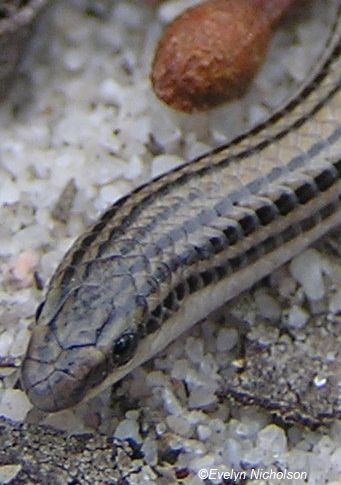
The Striped Worm-lizard is a slender, worm-like burrowing legless lizard that can reach up to 22 centimeters in length. It has a rounded head and snout, small eyes, very small hind limb scales and a blunt tail shorter than the body. There are 12 mid-body scale rows. It is brown or grey/yellow brown on the upper surface with a pale off-white underside. There are three distinctive black stripes along its body, the lower stripe being in alignment with the eye. There is also a short stripe running from the centre of the head along the spine (Viridans 2005; Cogger 2000).
Distribution in Victoria
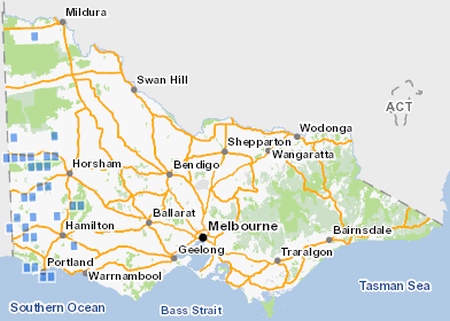
In Victoria, records of the Striped Worm-lizard are confined to the south-west region where it extends from the South Australian to border to the Grampians and from the coastal areas of Bridgewater Bay to the Little Desert, north-west of Horsham.
Key Local Government Areas for Striped Worm-lizard
- Glenelg Shire
- West Wimmera Shire
- Hindmarsh Shire
- Southern Grampians Shire
- Northern Grampians Shire
Habitat
The Striped Worm-lizard is usually found in semi-arid habitats, in loamy or sandy soils and can often be found living beneath the soil, under rocks, logs and in the litter below, or in the root systems of arid area shrubs (Cogger 2000). In Victoria, this species is most often associated with heathland, mallee, heathy woodland and shrubland with a tussock grassland understory (Beardsell et al. 1999). Most Victorian records are in the Lowan Mallee, Wimmera, Glenelg Plain and Bridgewater bioregions where its range extends across the boarder into the Naracoorte Coastal Plain in South Australia. It has also been recorded in the western portion of the Greater Grampians bioregion. The Volcanic Plains do not provide suitable habitat for this species, although there is one record in the Penshurst area.
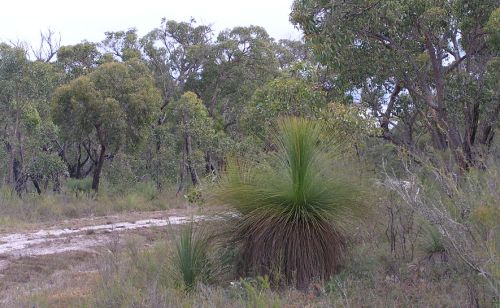
Life History and Ecology
The Striped Worm-lizard has been seldom studied and as a result there is little biological information on this species, and little on the genus as a whole. What is known is that it is oviparous usually laying a clutch of 2 eggs and reproduction is aseasonal which is virtually unique among high latitude squamates in Australia (Webb & Shine 1994). Greater than 95% of its diet is made up of larvae and pupae of several ant species (Patchell & Shine 1986; Webb & Shine 1994). The greatest volumes of food are consumed in the spring and summer with no feeding in winter (Webb & Shine 1994).
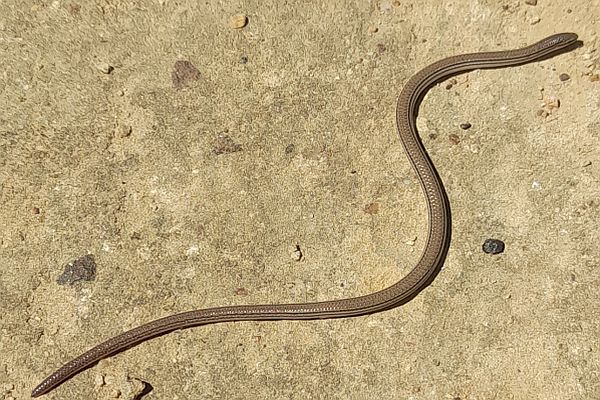
Threats
The cause of this species decline and the major ongoing threats to its survival is thought to be the loss, degradation and fragmentation of habitat (Osborne et al. 1995). Major contributing factors being:
- agricultural development and urbanization
- slashing and vegetation removal
- removal of rocks and logs
- predation by feral cats and foxes
- invasion of habitat by weeds or pasture species,
- altered fire regimes
The lack of knowledge concerning this species ecological requirements and distribution are impediments to effective conservation efforts.
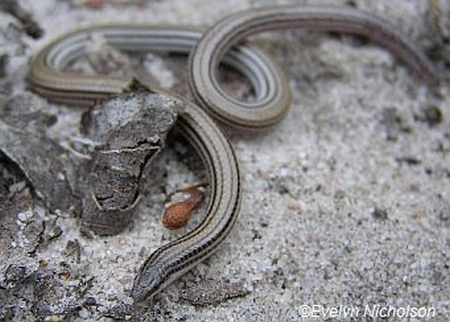
Conservation of Striped Worm-lizard in Victoria
The conservation status of Striped Worm-lizard was re-assessed from Near Threatened in 2013 (DSE 2013) to Endangered in 2020 as part of the Conservation Status Assessment Project – Victoria (DELWP 2020). It is now listed as Endangered under the Victorian Flora and Fauna Guarantee Act 1988 - Threatened List - March 2025.
Past Management Actions
The Discovery Bay National Park, Management Plan recognises that threatened species such as the Striped Worm-lizard and its habitat requires active management (Parks Victoria 2004).
In 2007 the DSE and an International Student Volunteer group established survey sites for reptiles and small mammals in places with a range of fire histories in the Casterton region. This survey targeted the endangered Heath Mouse and the Striped Worm-lizard to better understand how species respond to fire and identify 'fire sensitive' species whose distribution and abundance are markedly affected by fire.
Current projects
More information is required on projects contact SWIFFT
Suggested management for conservation of the Striped Worm-lizard
Advance knowledge of biology, ecology and management requirements
- Undertake distributional, biological and ecological surveys of the Striped Worm-lizard
- Monitor known populations to determine population trends.
Protect and enhance the condition of habitat
- Assess and monitor threats to known populations (including weeds, introduced predators and habitat loss).
- Undertake surveys of potential habitat to uncover previously unknown populations.
- Secure populations or habitat from potentially incompatible land use or catastrophic loss.
Raise community awareness and support
- Increase community awareness and participation in conservation of the Striped Worm-lizard .
References
AFD (2016) Australian Faunal Directory, Australian Government, Department of Environment, Accessed 17 May 2016. Species Aprasia striolata Lütken, 1863 Lined Worm-lizard, Striated Worm-lizard.
Beardsell, C., Clemann, N, Silins, J. & McNabb, E. (1999) New Records for Striped Worm Lizard Aprasia striolata in south western Victoria. The Victorian Naturalist, 116, 177-180
Cogger, H. G. (2000) Reptiles and Amphibians of Australia. New Holland. Sydney.
DELWP (2020) Provisional re-assessments of taxa as part of the Conservation Status Assessment Project – Victoria 2020, Department of Environment Land Water and Planning, Victoria. Conservation Status Assessment Project – Victoria
DSE (2013) Advisory List of Threatened Vertebrate Fauna in Victoria. Department of Sustainability and Environment. East Melbourne.
FFG Threatened List (2025) Flora and Fauna Guarantee Act 1988 - Threatened List - March 2025, Department of Energy, Environment and Climate Action (DEECA), Victoria.
illam M. (2003) Aprasia striolata in central Auatralia? In: Newsletter of the Australian Society of Herpetologists 40. Australian Society of Herpetologists Incorporated. Australia.
IUCN Red List (2025) Cogger, H. & Shea, G. 2017. Aprasia striolata. The IUCN Red List of Threatened Species 2017: https://dx.doi.org/10.2305/IUCN.UK.2017-3.RLTS.T102828411A102828490.en. Accessed on 16 April 2025.
Osborne. W., Kukolic. K. & Jones. S. (1995) Management of Threatened Vertebrates in Native Grasslands: a Case Of Clutching at Straws? In: Management of Relict Lowland Grasslands. ACT Parks and Wildlife Service. Canberra.
Patchell, F. C. & Shine , R. (1986) Food Habits and reproductive biology of Australian Legless Lizards (Pypopodidae). Copeia, 1, 30-39.
Parks Victoria (2004) Discovery Bay Parks Management Plan. Parks Victoria, Melbourne.
VBA (2016) Victorian Biodiversity Atlas, Department of Environment, Land, Water & Planning, Victoria.
Viridans (2005) Wild Animals of Victoria. Viridans Biological Databases. Australia.
Webb, J.K. & Shine, R. (1994) Feeding Habits and Reproductive Biology of Australian pygopopdid Lizards of the Genus Aprasia. Copeia. 2, 390-398.

